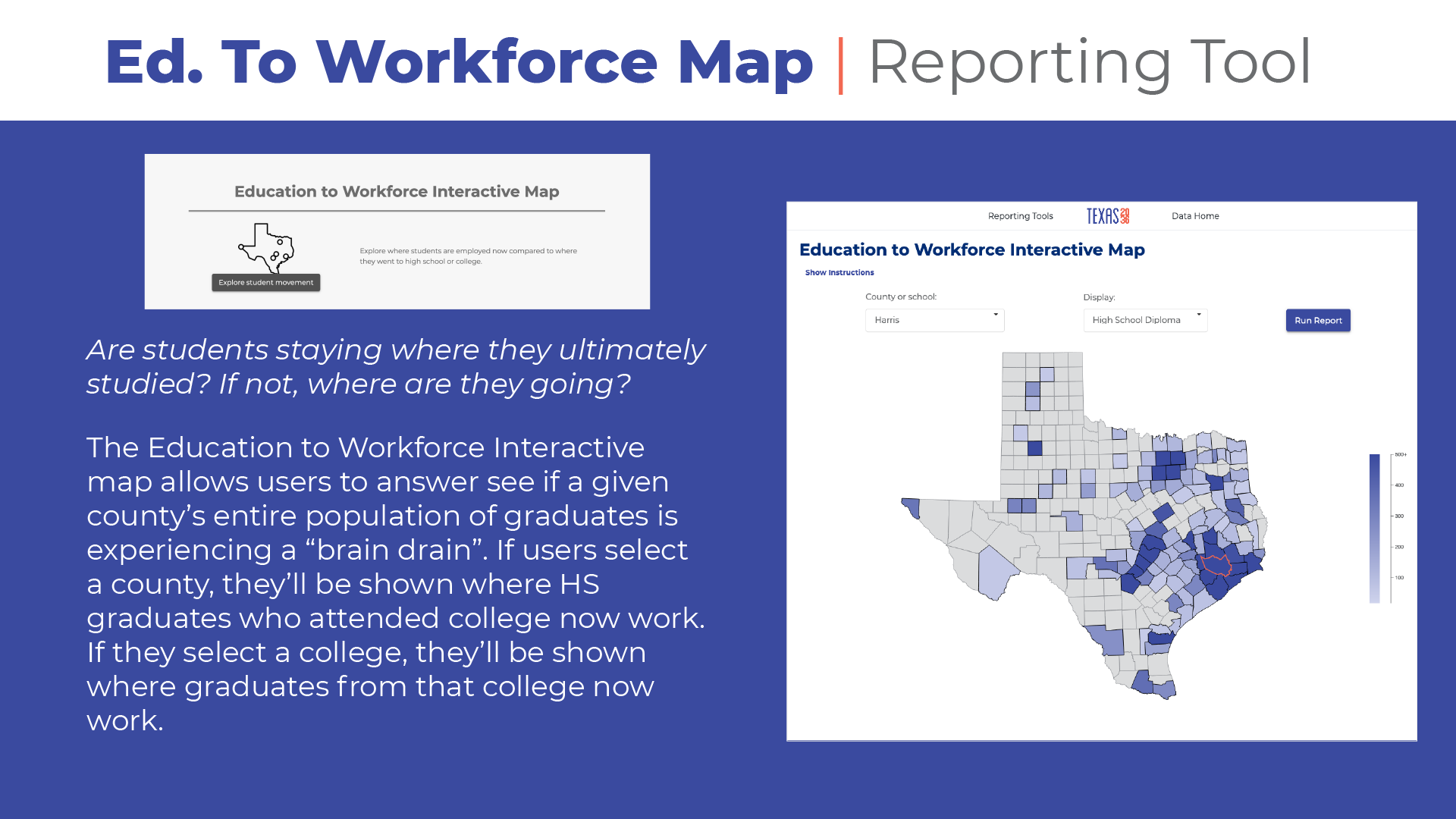Today we are unveiling expanded, localized data tools that provide new information and insight on the paths Texans take after graduating high school.
The data puts an unprecedented spotlight on the challenges of preparing students for the millions of 21st century jobs that Texas will need to extend its prosperity into its bicentennial year of 2036 and beyond.
The reporting tools can be found at: https://reports.texas2036.org. Based on information from the Texas Education Agency, the Texas Higher Education Coordinating Board and the Texas Workforce Commission, these data sets include a variety of metrics detailed by high schools, school districts or counties.
Texans who engage with reporting tools will find a wide variety of information about how well Texans are progressing through higher education and where they are landing after afterward:
The teams that assembled the tools could not see any personal identifying information about the individuals behind the data, and such identifying information is not available or visible to anyone using the tools.
One of the most critical questions that will shape the future of our state is whether we will have the educated workforce to fill the jobs of the future. In the coming years, 77 percent of jobs will require a college degree or certificate, but only 28 percent of Texas eighth-graders now complete a postsecondary degree or certificate within six years of high school graduation. In fact, more than half of Texans between ages 25 and 34 have not completed any form of postsecondary education.
Our new data tools provide much of the context around where we are now and where we are heading. It’s the type of data that can point Texas toward the strategies and solutions our ever-growing state will demand.





